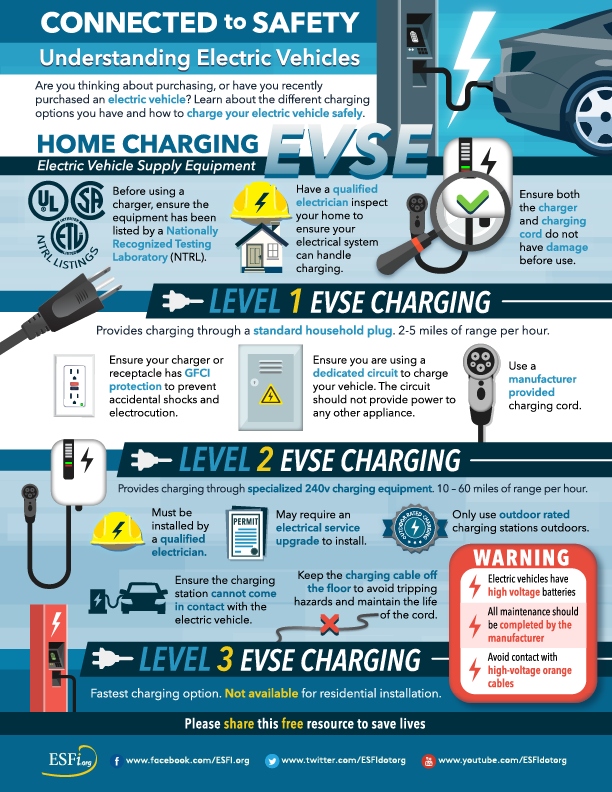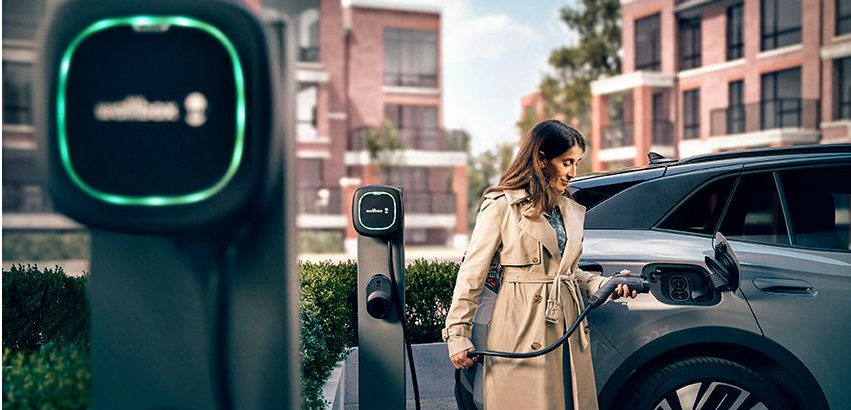
Connected to Safety
Are you purchasing, or have you recently purchased, an electric vehicle? Learn about the different charging options you have and how to charge your electric vehicle safely.
HOME CHARGING: ELECTRIC VEHICLE SUPPLY EQUIPMENT (EVSE)
- Before using a charger, ensure the equipment has been listed by a Nationally Recognized Testing Laboratory (NRTL)
- Have a qualified electrician inspect your home to ensure your electrical system can handle charging
- Ensure both the charger and charging cord do not have damage before use
LEVEL 1 EVSE CHARGING
Level 1 provides charging through a standard household plug. 2-5 miles of range per hour charged
- Ensure your charger or receptacle has GFCI protection to prevent accidental shocks and electrocution
- Ensure you are using a dedicated circuit to charge your vehicle. The circuit should not provide power to any other appliance
- Use a manufacturer-provided charging cord
LEVEL 2 EVSE CHARGING
Provides charging through specialized 240v charging equipment. 10 – 60 miles of range per hour charged
- Must be installed by a qualified electrician
- May require an electrical service upgrade to install
- Only use outdoor-rated charging stations outdoors
- Ensure the charging station cannot come in contact with the electric vehicle
- Keep the charging cable off the floor to avoid tripping hazards and maintain the life of the cord
LEVEL 3 EVSE CHARGING
Fastest charging option. Not available for residential installation 480 volts , more of a commercial and Industrial setup.
what is 480 volts used for commercial

The most common commercial building electric service in North America is 120/208 volt wye, which is used to power 120 volt plug loads, lighting, and smaller HVAC systems. In larger facilities the voltage is 277/480 volt and used to power single phase 277 volt lighting and larger HVAC loads.
WARNING
- Electric vehicles have high voltage batteries
- All maintenance should be completed by the manufacturer
- Avoid contact with high-voltage orange cables
